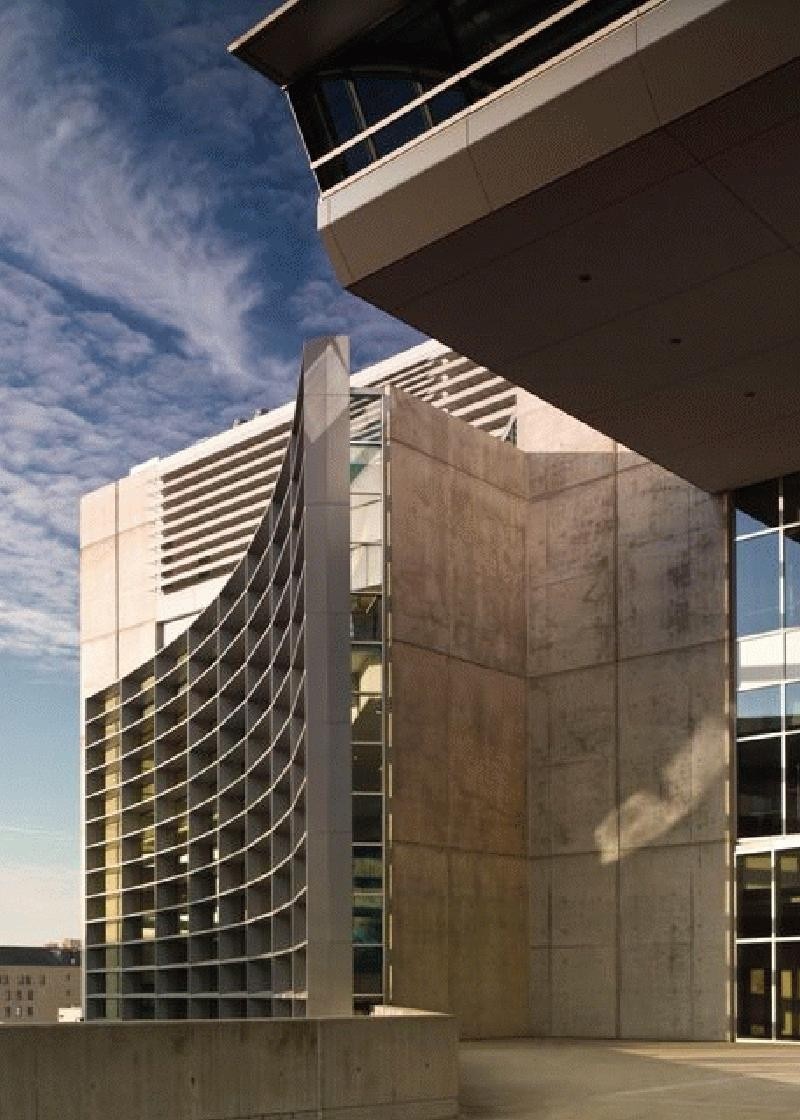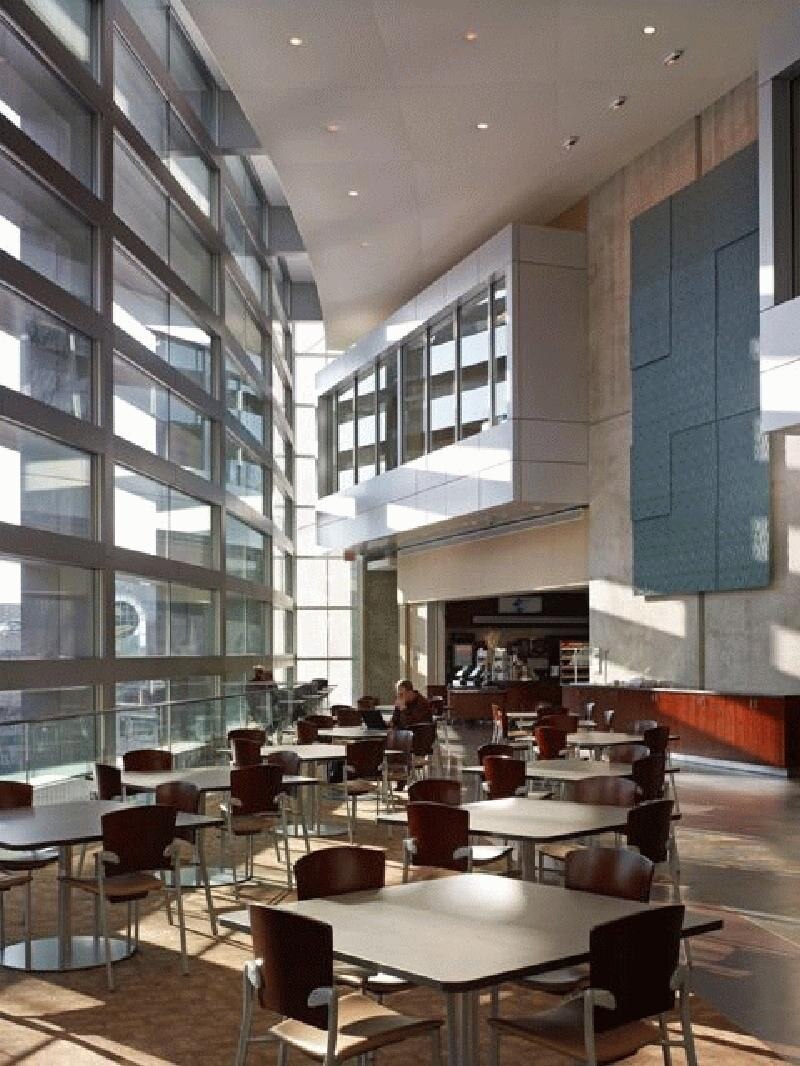A major fixture of Grand Rapid’s “Medical Mile”, the Institute was designed by Viñoly in 1997 as a phased-growth facility, expandable and adaptable to meet the changing needs of its team of elite researchers. Phase II adds 240,000 square feet of new laboratory space as well as innovative environmental and service features that bring the building to the forefront of the health sciences in the 21st century.
Built into a hillside overlooking downtown Grand Rapids, the Van Andel Institute’s dramatic stepped silhouette follows the sloping topography of its scenic site. Inside, terraced floors punctuated by double-height atria are glazed in segmented-arc skylights that allow natural light to flood into the laboratories below. At the heart of the building, the central research space is as functional as it is flexible, with equipment-intensive zones located beneath interstitial service levels for ease of maintenance on each floor, and laboratory benches that have been transformed into mobile lab stations, complete with integrated task lighting, power/data management systems, and vacuum and specialty gas piping. Connecting the laboratories, brightly lit public corridors and stairwells encourage chance interactions among researchers, while on the lower floors, light- and vibration-sensitive spaces—including a 325-seat auditorium and imaging spaces—are tucked into the face of the hill, along with loading docks and parking for 35 cars.
With Phase II, the building has doubled along the line of its vertical concrete service core, which now acts as a central spine embedded in the structure. To the east of the core, three sky-lit floors housing laboratories and administrative offices are cantilevered over the main entrance plaza and lobby; from there, visitors can directly access conference and event spaces, as well as the cafeteria and library. To the west, five more laboratory and administrative floors cascade down the hill, offering researchers and administrators breathtaking views over downtown Grand Rapids and the Grand River beyond.
Phase II is also expected to achieve LEED Gold in 2010. Sunlit labs mean less need for electric lighting, and 13,000 square feet of photovoltaic panels makes up much of the difference. Waterless urinals and a vegetated “green roof” reduce water consumption and runoff; the building itself was constructed in large part from materials extracted or manufactured locally and from recycled materials. Even the site—in a dense urban area, on a former brownfield site, with little disruption to the surrounding natural habitat—adds to VAI’s green credentials.




